Of all the annual flowering plants you can grow in your cutting garden (or even in the back of your veggie patch), none is more productive than cosmos. They truly are a cut-and-come-again flower: The more you harvest them, the more they bloom.
A single planting will produce buckets of airy, delicate, daisy-like blossoms for many months. You can arrange them on their own or weave them into mixed bouquets. The possibilities are endless.
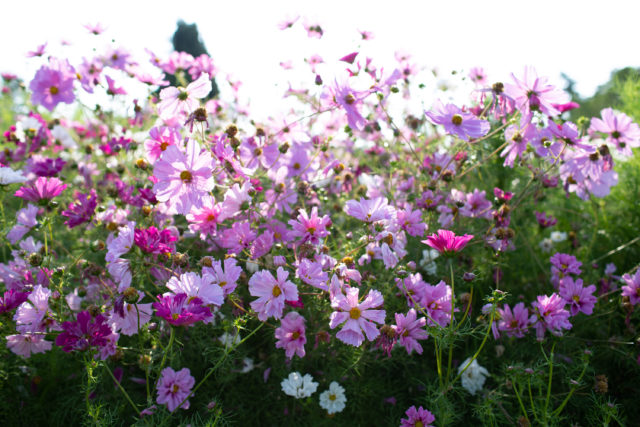 Cosmos are incredibly easy to grow, making them perfect for beginning gardeners. Seeds can be started indoors to get a jump-start on the season or sown directly into garden beds once the weather warms.
Cosmos are incredibly easy to grow, making them perfect for beginning gardeners. Seeds can be started indoors to get a jump-start on the season or sown directly into garden beds once the weather warms.
Either way, cosmos will bloom in just under 3 months from the date you sow them.
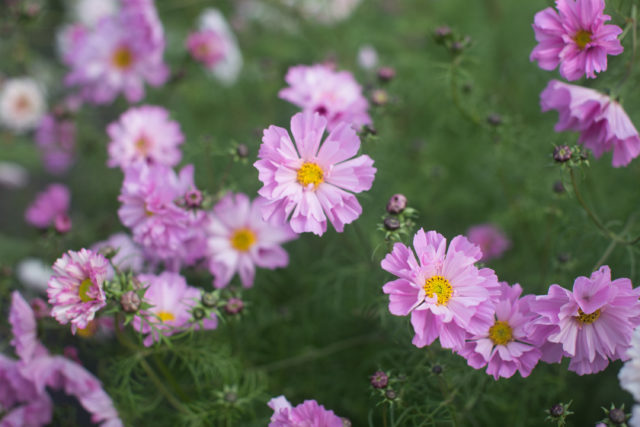 To start indoors, sow seeds 4 to 6 weeks before the last spring frost, then plant seedlings into the garden once all danger of frost has passed. Be careful not to sow seed too early, because seedlings will quickly outgrow their pots before the weather has warmed enough to put them out into the garden.
To start indoors, sow seeds 4 to 6 weeks before the last spring frost, then plant seedlings into the garden once all danger of frost has passed. Be careful not to sow seed too early, because seedlings will quickly outgrow their pots before the weather has warmed enough to put them out into the garden.
Alternatively, you can sprinkle seeds in your garden once danger of frost has passed. In about a week, you’ll see seedlings sprout up from the soil. Keep the young plants protected from slugs and snails as they are getting established since new growth is quite tender.
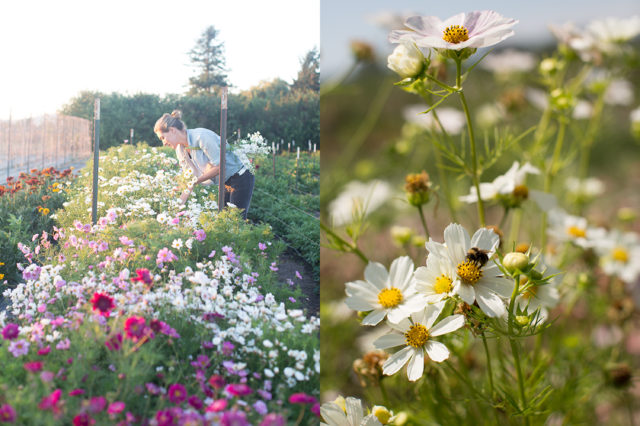 Plants get very bushy and prefer a little extra room to spread out, so space plants 12 to 18 in (30 to 46 cm) apart. Once in the ground, cosmos will grow rapidly, so be sure to stake them early, while they are still young. Cosmos also benefit from a technique called pinching, which will encourage the already highly productive plants to branch even more vigorously.
Plants get very bushy and prefer a little extra room to spread out, so space plants 12 to 18 in (30 to 46 cm) apart. Once in the ground, cosmos will grow rapidly, so be sure to stake them early, while they are still young. Cosmos also benefit from a technique called pinching, which will encourage the already highly productive plants to branch even more vigorously.
Here’s how it’s done: When plants are young, between 8 to 12 in (20 to 30 cm) tall, take sharp pruners and snip the top 3 to 4 in (8 to 10 cm) off the plant, just above a set of leaves. This signals the plant to send up multiple stems from below where the cut was made, resulting in more abundant flower production as well as longer stem length.
I typically do two sowings of cosmos, a month apart. This gives me a wide range of flower types and loads of blooms for cutting from summer into fall. I list some of my favorites here.
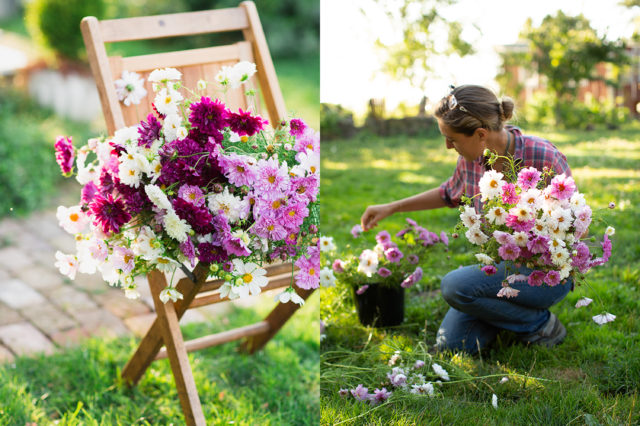 The ‘Double Click’ series is available as a mix or in single colors. This unique double-flowered variety is loaded with fluffy blooms that look great in bouquets.
The ‘Double Click’ series is available as a mix or in single colors. This unique double-flowered variety is loaded with fluffy blooms that look great in bouquets.
The Double Click Mix (pictured above) includes snow white, vibrant cranberry, rosy mauve, and a lovely soft blush.
Individual colors are also available, and I am particularly fond of ‘Bicolor Rose’, ‘Cranberries’, and ‘Snow Puff’.
 Nothing says country charm like pure white cosmos, and two of my favorite white varieties are ‘Purity’ and ‘Psyche White’.
Nothing says country charm like pure white cosmos, and two of my favorite white varieties are ‘Purity’ and ‘Psyche White’.
‘Purity’ (pictured above, left) is a cheerful daisy-like bloomer that produces an abundance of pure white, single flowers.
The large, pure-white blooms of ‘Psyche White’ (pictured above, right) are a mixture of single and semi-double flowers with a central ring of fluffy miniature petals. The ruffled flowers look like snowflakes dancing in the breeze.
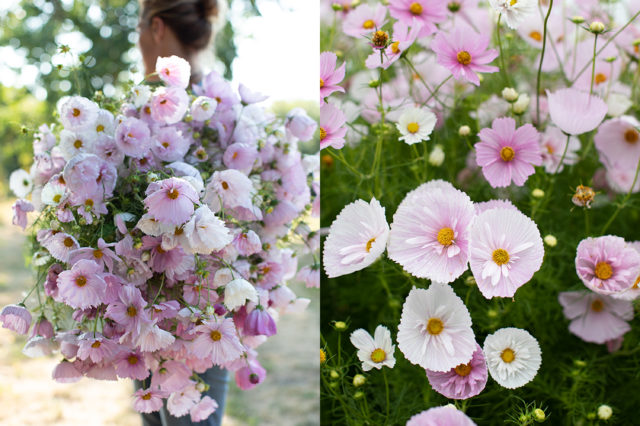 Two recent introductions to the cosmos family remind me of the Sugar Plum Fairy.
Two recent introductions to the cosmos family remind me of the Sugar Plum Fairy.
The pale blush petals of ‘Cupcakes Blush’ (pictured above) are fused together, forming a teacup-shaped flower. Blooms are as big as the palm of your hand, and the edges look as if they have been cut with pinking shears. This romantic variety is a mix of single, semi-double, streaked, and solid flowers. Perfect for wedding work, this variety is a must-grow!
‘Cupcakes White’ is a pure-white version of its blush sister. Flowers are just as big and are extremely versatile for arranging.
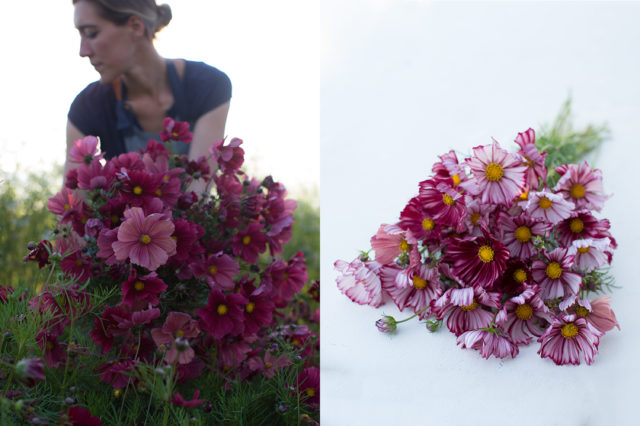 If you’re drawn to rich, dramatic colors, look no further than these stunning beauties.
If you’re drawn to rich, dramatic colors, look no further than these stunning beauties.
‘Rubenza’ (pictured above, left) is an uncommon cosmos in a vibrant range of colors. The large, single blooms open with deep ruby petals and then fade into shades of muddy rose and terracotta as they age. There is nothing like this variety.
‘Velouette’ (pictured above, right) has fast become a new favorite on the farm and features deep mahogany flowers with delicate white striping. Tall and dramatic, this variety churns out armloads of long stems that are perfect for bouquets.
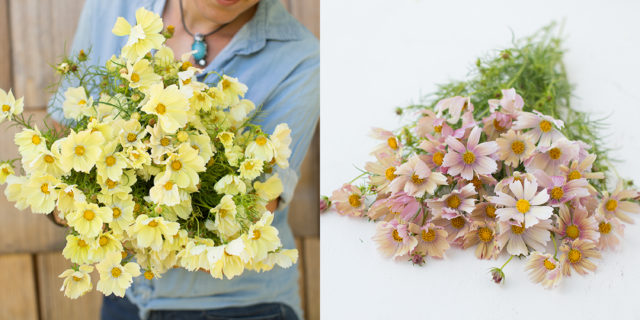 Two fun novelty cosmos carry the most unusual colors. While both are on the shorter side, they make up for it in their exquisite coloring.
Two fun novelty cosmos carry the most unusual colors. While both are on the shorter side, they make up for it in their exquisite coloring.
The delicate, pale yellow flowers of ‘Xanthos’ (pictured above, left) have green undertones. The unique ruffled flowers have a subtle inner collar and pale throat, and blossoms have a dark yellow eye encircled by tiny fringed petals with pale, serrated tips.
There is absolutely no cosmos like the beautiful ‘Apricot Lemonade’. The unique color reminds us of ‘Distant Drums’ roses—watercolor petals start out a soft apricot with a dusty lavender reverse and fade to a buttery yellow. Variations among the blooms include some flowers with a mauve ring at the throat. A bit of separation between the petals gives the impression of a pinwheel with snipped dovetail edges. This is a must-grow for event work.
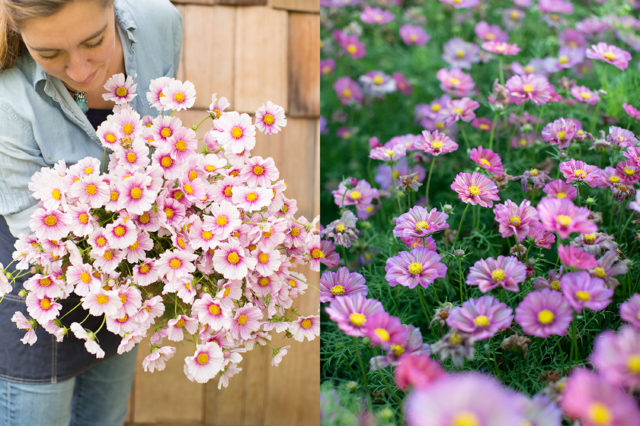 Striking in both the garden and the vase, these fun and eye-catching varieties are a must-grow if you’re looking for something different.
Striking in both the garden and the vase, these fun and eye-catching varieties are a must-grow if you’re looking for something different.
The palest pink blooms with dark rosy throats make ‘Daydream’ (pictured above, left) an eye-catching addition to the landscape and a sweet treasure for the cutting garden or flower border. This variety has proven to be the most heat-tolerant cosmos we’ve grown.
‘Xsenia’ (pictured above, right) is an early-to-flower gem that is a new favorite on the farm. Shades of magenta, purple, and raspberry have an iridescent quality and age to an apricot cast. Blooms are more petite than those of other cosmos varieties, and medium-size, healthy plants carry flowers on strong, upright stems. Because the bloom color is so varied, the flowers have a chameleon-like quality, and they mix well with a wide range of shades.
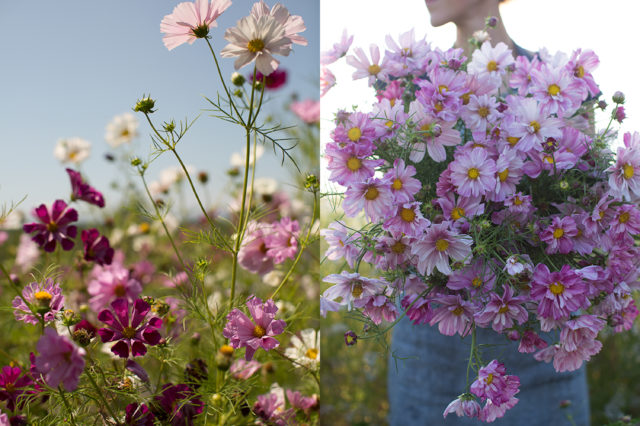 Finally, we have to mention two beautiful and hardworking pink treasures.
Finally, we have to mention two beautiful and hardworking pink treasures.
The delightful Seashells Mix (pictured above, left) is filled with large, showy blooms that have fluted, tubular petals resembling seashells. Flowers come in a sweet pastel mix of pink, rose, white, carmine, and other unique bicolors.
‘Rosetta’ (pictured above, right) is a new variety that’s a must-have for arranging and looks stunning en masse. Blooms have a layer of half-double petals that resemble fluffy petticoats. This variety is a mix of soft pink, blush, and rose; each petal looks hand-painted.
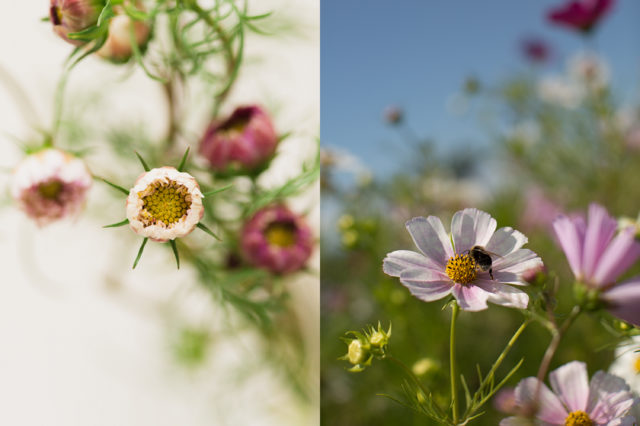 To prolong their flowering time, keep cosmos harvested regularly, and deadhead any spent flowers before they set seed. The individual blooms of cosmos don’t last a particularly long time in the vase, about 5 to 6 days, but each stem is loaded with multiple blossoms that open individually over a period of a week.
To prolong their flowering time, keep cosmos harvested regularly, and deadhead any spent flowers before they set seed. The individual blooms of cosmos don’t last a particularly long time in the vase, about 5 to 6 days, but each stem is loaded with multiple blossoms that open individually over a period of a week.
Harvest when the buds are colored but haven’t opened up yet; this will keep insects from pollinating them and help stretch the vase life by a few additional days.
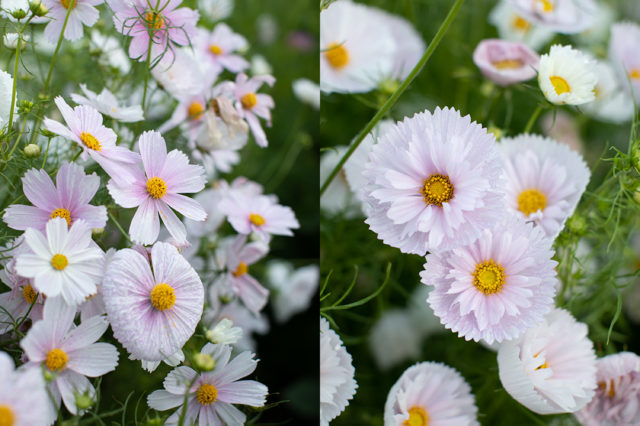 For a small investment of time and garden space, you will be able to fill your house with these cheerful flowers all summer long.
For a small investment of time and garden space, you will be able to fill your house with these cheerful flowers all summer long.
I would love to hear your experience with this wonderful group of plants. Do you grow cosmos or plan to add them to your garden this coming season? If so, what are your favorite varieties?
Please note: If your comment doesn’t show up right away, sit tight; we have a spam filter that requires us to approve comments before they are published.

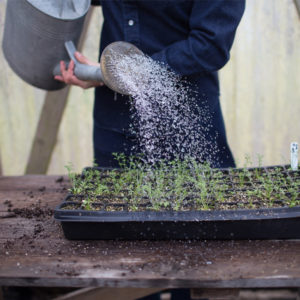

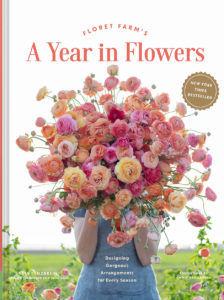



Marlena Hirsch on
I had spring-planted cosmos that had no flowers till October. Finally after the plants were about six feet tall, they made a pink cloud of blossoms. They were spectacular. I hope to keep these going from saved seed. I grow about an hours drive north of San Francisco, so the plants had time to bloom.